How Should Supplies Be Stored on a Small Boat? A Practical Guide
Owning a small boat is a wonderful way to enjoy fishing trips, day cruises, or weekend getaways on the water. However, one of the biggest challenges boaters face is figuring out how should supplies be stored on a small boat to make the most of limited space. Unlike larger vessels, small boats require thoughtful planning to ensure that gear, food, safety equipment, and personal belongings are accessible yet securely stowed. This practical guide will walk you through the essentials.
Why Proper Storage Matters
Storage on a boat isn’t just about convenience it’s about safety and efficiency. Poorly stored items can create clutter, increase the risk of accidents, and even lead to damage if supplies get wet or knocked around. By organizing your gear properly, you’ll make the most of your boat’s limited space while keeping everything secure during rough waters.
1. Prioritize Safety Equipment
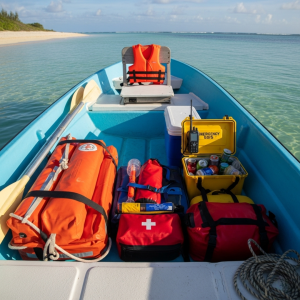
The first rule of storing supplies on a small boat is to keep safety gear accessible. Items like life jackets, fire extinguishers, flares, and first-aid kits should never be buried under other supplies. Use designated compartments or mount storage bags on walls or under seats so you can reach them instantly in an emergency.
Tip: Store life jackets in a breathable mesh bag to prevent mildew and make them easier to grab quickly.
2. Use Waterproof Storage Containers

Moisture is a constant challenge on small boats. To protect food, electronics, clothing, and other essentials, invest in waterproof containers or dry bags. Clear bins are especially useful because you can see the contents at a glance. For small items like keys, wallets, and phones, a compact waterproof box is a must-have.
Pro Tip: Label each container (e.g., “First Aid,” “Snacks,” “Fishing Gear”) so you know exactly where everything is.
3. Maximize Vertical and Hidden Spaces
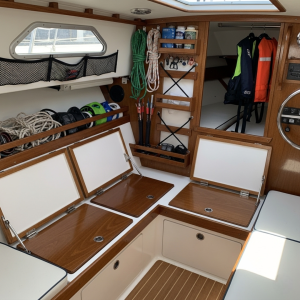
On a small boat, every inch of space matters. Look for hidden storage opportunities such as under-seat compartments, inside bench lockers, or vertical wall-mounted organizers. Hanging mesh bags or pocket organizers can hold smaller items like sunscreen, maps, and water bottles without taking up floor space.
4. Keep Heavy Items Low and Centered
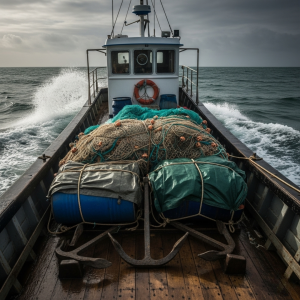
Weight distribution is crucial for boat stability. Store heavier supplies such as fuel tanks, batteries, or large coolers low and near the center of the boat. This reduces the risk of tipping and improves overall balance. Lighter items like towels, snacks, and clothing can go in higher compartments or mesh bags.
5. Separate Wet and Dry Storage
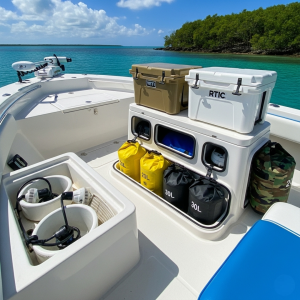
Mixing wet and dry supplies is a common mistake that can ruin food, clothing, and electronics. Designate one cooler or bin for drinks and another for dry snacks. Keep a dry bag specifically for clothing and towels. If you bring fishing gear or diving equipment, store it separately from other items to avoid water contamination.
6. Create a Supply Rotation System
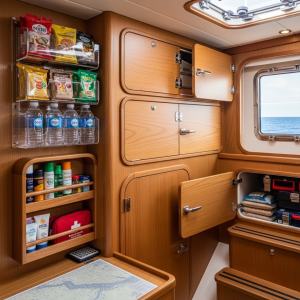
For longer trips, it’s smart to rotate supplies regularly. Place items you’ll use most often—like water bottles, snacks, or sunscreen at the top or front of storage areas. Keep backup items and rarely used tools in less accessible compartments. This prevents constant unpacking and repacking during your trip.
7. Don’t Forget Trash Management
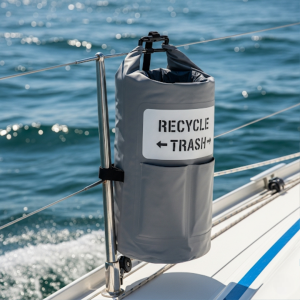
A cluttered boat can quickly become unsafe. Always bring a designated waterproof trash bag or container to keep waste under control. This not only helps maintain order but also ensures you’re following proper environmental practices by preventing litter from entering the water.
Final Thoughts
If you’ve ever wondered how should supplies be stored on a small boat, the answer lies in careful planning, waterproofing, and smart organization. By prioritizing safety equipment, keeping heavy items low, and separating wet from dry storage, you’ll enjoy safer and more comfortable trips. For boaters who want reliable solutions and trusted gear, Dockstop makes it easier to stay organized and prepared for every adventure.
